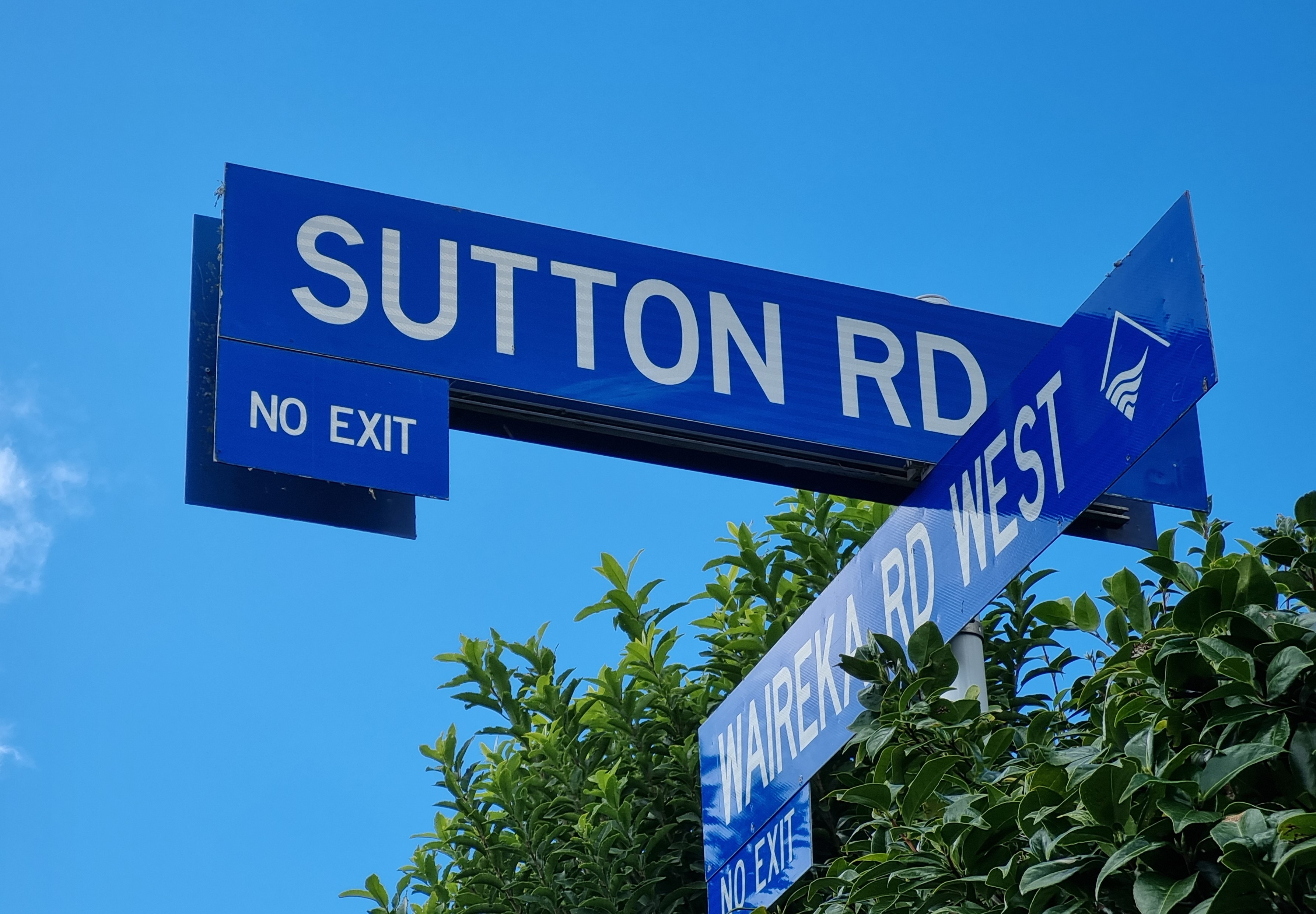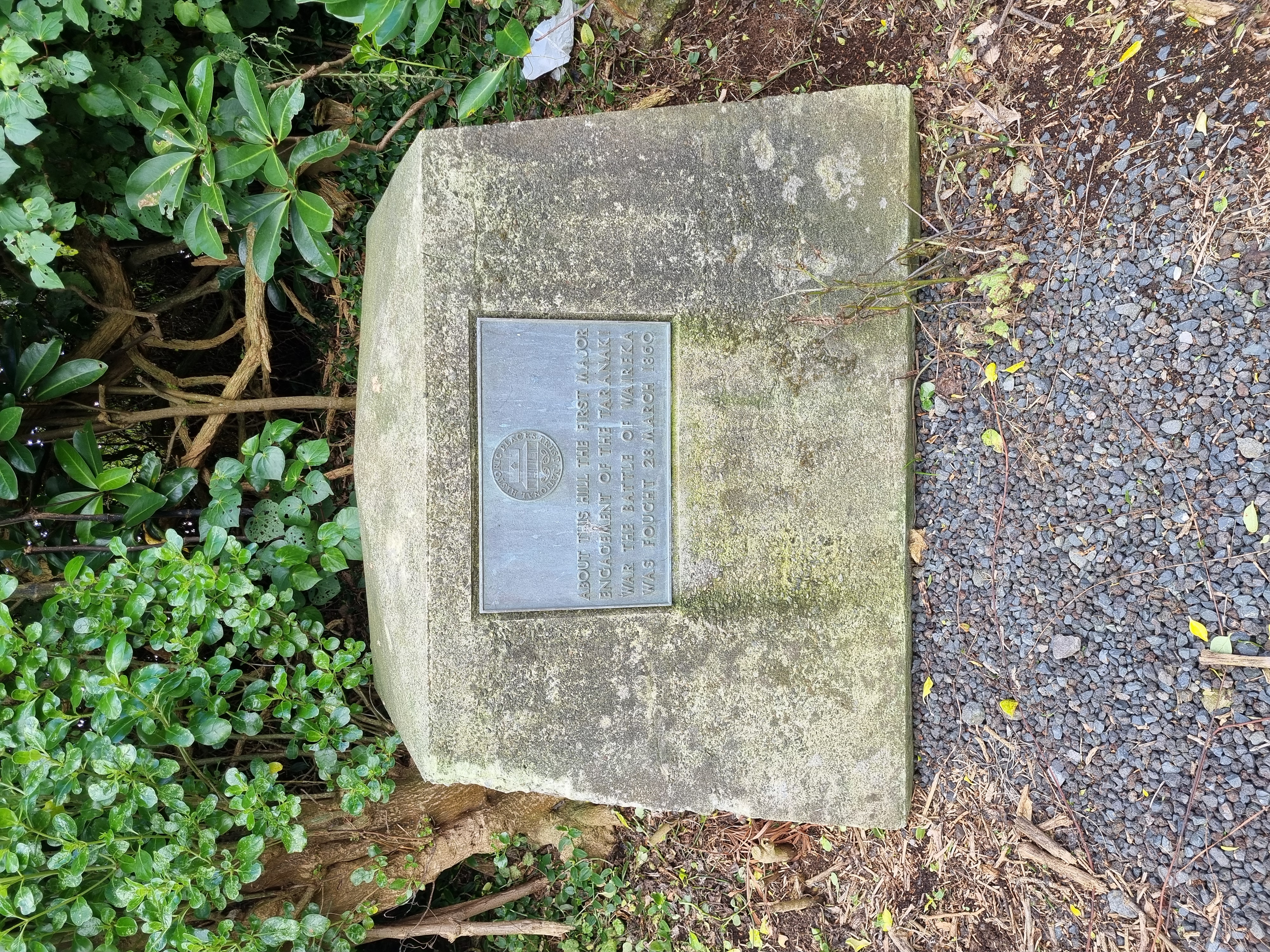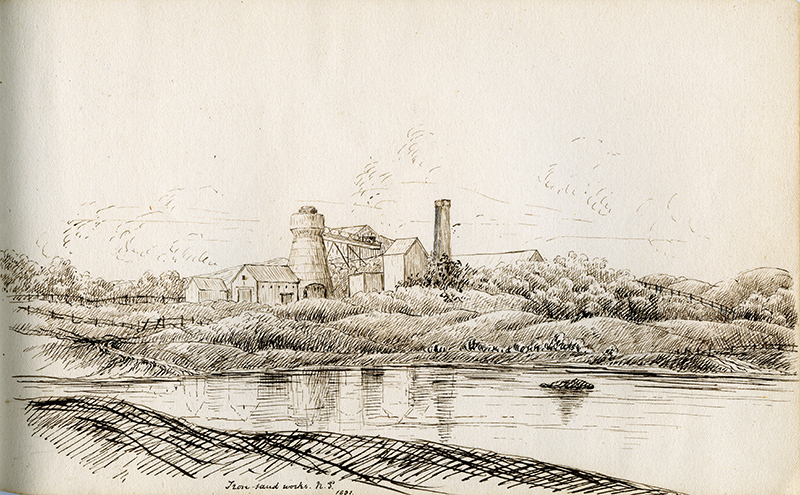





Ōmata's Sutton Road runs from Waireka Road West to the sea and was named after an early landowner on the road who hoped the black sands near his coastal residence might make him a wealthy man.
Charles Sutton was born in Surrey England in 1807 and came out to New Plymouth in 1843. His wife, Elizabeth Tuffs (nee Cawthrone) and 13-year-old son, Charles Sutton junior, arrived in 1846. Charles senior secured several early Crown Land Grants for land in New Plymouth but also in the Ōmata area. Three of these sections were situated on the town side of Sutton Road where he began farming.
Charles must have had an entrepreneurial spirit that extended beyond farming though because from as early as 1848 he was involved with attempts to make iron from the plentiful ironsands on the nearby coast. Along with John Perry, Charles conducted early experiments into ironsand smelting – heating iron sands to extract iron - however these proved unsuccessful as the sand choked the furnaces. He may have been spurred into action due to a reward of £150 being offered by a local committee to anyone; “who should produce from the sand a merchantable article of cast or wrought iron and should be able to show to the satisfaction of umpires that the process could be continuously, successfully, and profitably carried on.” This reward was never claimed.
These early experiments were precursors to Edward Melcalf Smith’s company, NZ Titanic Steel and Iron Company, which had a furnace at the Te Hēnui River mouth in the 1870s, but which also proved to be unsuccessful. It wouldn’t be until the 1960s, when construction began on New Zealand Steel’s mill at Glenbrook, that a commercial steel industry began to utilise the ironsands resource that seemed so obvious to early settlers, like Charles Sutton, John Perry and Edward Metcalf Smith. Even today, ironsand and the environmental impacts of mining this off the Pātea Coast, continue to be a source of great debate and community focus.
Sometime in the early 1870s Charles senior and Elizabeth separated. Elizabeth (who had been 23 years older than Charles when they married) moved to Raglan where her son, by her first marriage, was living. She died in 1877 at the age of 91. Charles married again as a 70-year-old, to Margaret Goodwin in 1877, but he died the following year. His ornate headstone at Te Hēnui Cemetery and sizable estate suggest he was a wealthy man by the standards of the time – but still no ironsands millionaire as he had perhaps hoped.
On the corner of Sutton Rd and Waireka Rd West is a Historic Places plaque which commemorates the Battle of Waireka which was fought in the surrounding countryside on 28 March 1860.
This story was originally published in the Taranaki Daily News.
Books
The Industrious Heart: a history of New Plymouth, J.S Tullet (1981)
Early Pioneers: the inter-connection of three colonial families - Suttons, Parrs and Corcorans, Ross Sutton (2012)
Taranaki Iron Sand: a metal romance, Taranaki Herald Print (1917)
Omata 150 years, 1863 - 2003, Kim Ferens (2003)
Please do not reproduce these images without permission from Puke Ariki.
Contact us for more information or you can order images online here.